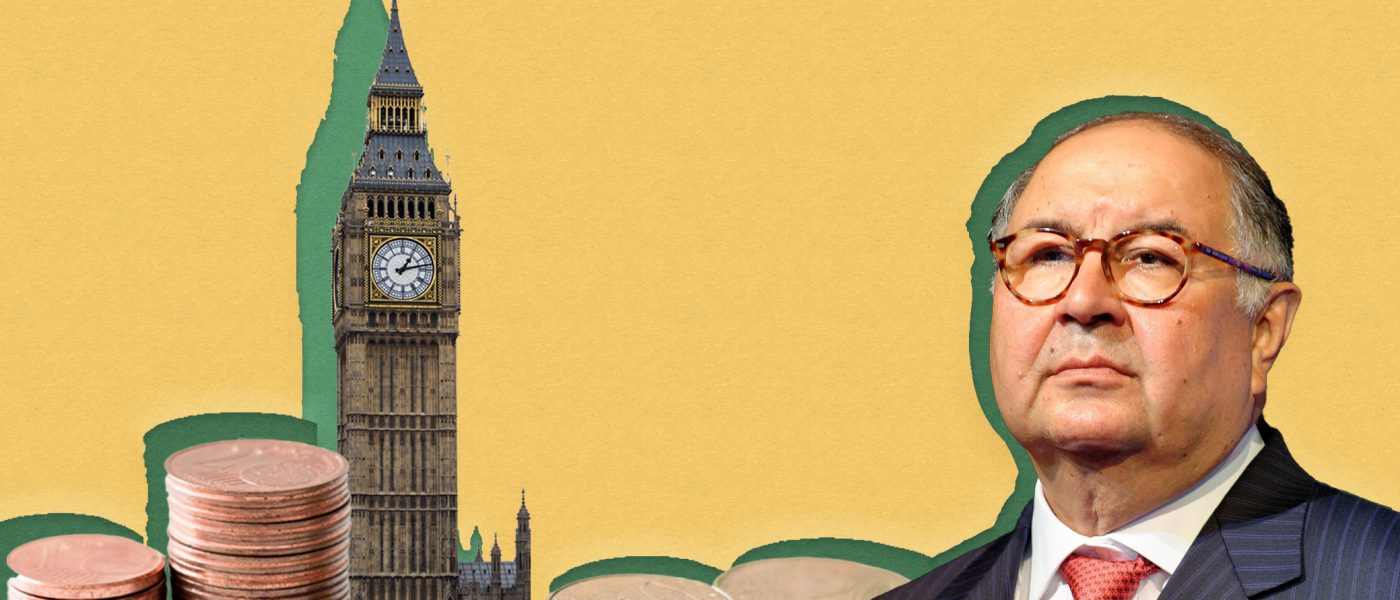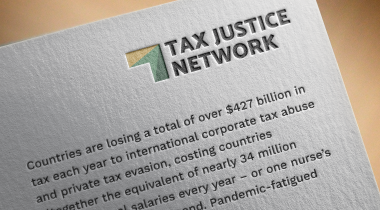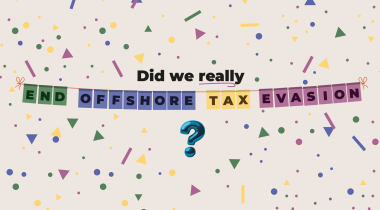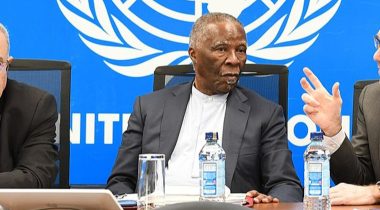
Andres Knobel ■ No, trusts are not impenetrable shields for oligarchs’ assets. Here’s how to pierce them.

On 22 March 2022, the BBC and the Guardian published a story about Alisher Usmanov, a Russian mining and telecoms oligarch, who is a former major shareholder of Arsenal football club and was once said to be the UK’s richest person. He is now a subject of sanctions against key associates of Russian president Vladimir Putin. But there seems to be a problem with applying sanctions to him involving trusts. A spokesman for Usmanov told The Guardian:
“…most of the billionaire’s UK properties, as well as his yacht, had been ‘long ago transferred into irrevocable trusts’. He added: ‘From that point on, Mr Usmanov did not own them, nor was he able to manage them or deal with their sale, but could only use them on a rental basis. Mr Usmanov withdrew from the beneficiaries of the trusts, donating his beneficial rights to his family.'”
This is the equivalent of crooks swimming across a river marking a country’s border, then thumbing their noses at the police fuming impotently on the other side. You may want to sanction Usmanov, the spokesman seemed to be taunting, but you won’t get his assets!
At first glance, this might seem like an open and shut case: he has wriggled free of sanctions. But is this really true?
In trusts we trust?
As we have explained on several occasions, a trust creates two key problems for the forces of law and order. One is secrecy. The other is that they can shield assets – like Russian oligarchs’ luxury apartments, yachts and so on – from the rule of law. In this case, from essential sanctions.
These two problems stem from the nature of the trust. In essence, a trust is a three-way arrangement. A settlor (for example, in this case Alisher Usmanov) places assets into a trust, which is a legal arrangement for deciding who will have rights of those assets. These assets are then managed by a trustee (typically a lawyer, close friend or family member) in favour of beneficiaries, who are often family members of the settlor. The assets now sit inside a new legal arrangement, very convenient to all those directly concerned.
The core problem is that if the settlor – Usmanov – has actually given the assets away, then you might conclude that he doesn’t own the assets any more, so sanctions applied to him will no longer affect those assets. That is why, to repeat, the spokesman said:
“From that point on, Mr Usmanov did not own them, nor was he able to manage them or deal with their sale, but could only use them on a rental basis.”
That could be seen as lawyerly language intended to distance Usmanov from the assets, to ensure that sanctions against him will not be able to reach his assets. In reality, settlors could routinely find ways to control or benefit from assets that they have placed into trusts, even if they don’t technically legally own them. A lot of what goes on is something of a façade.
The implications of this are, of course, immense. If people can use trusts to keep their assets inside this legal fortress enabling them to escape the law, then they are effectively above the law.
Fortunately, however, it is quite possible to penetrate trusts and get at the assets inside them. You just need the right political will. International initiatives have so far been underwhelming but now, with Russia’s invasion of Ukraine, there is a new urgency to get things rights.
Transparency on trust won’t cut it if sanctions remain near-sighted
Before we can delve into the weaknesses and at times complete absence of trust transparency measures among some of the world’s major economies, we must first make a point so obvious one would think is does not need to be spelled out – but here we are: transparency on trusts will only help implement sanctions if sanctions are designed to utilise that transparency. Having full transparency on the true beneficial owners of assets is wasted if sanctions are written to be “near-sighted”, that is, if they only target the legal owners of assets or the trustees of trusts and do not look too closely beyond this initial layer.
In the UK, according to the UK Financial sanctions general guidance, sanctions apply to designated entities, as well as to assets or entities “owned or controlled directly or indirectly” by sanctioned individuals. According to the law (as amended), “owned or controlled directly or indirectly” refers to an individual owning more than 50 per cent of shares or voting rights, with a right to appoint or remove the majority of the board or to achieve the results of the sanctioned individual’s wishes (see section 7, as expanded by Schedule 1 on joint interests, joint arrangements, etc). In addition, based on the amended The Russia (Sanctions) (EU Exit) Regulations 2019 law, sanctions should also apply to entities that have sanctioned individuals serving as directors, trustees or equivalent roles (see section 6.4.d of the law).
Now, if we thought that the widely used definition of a beneficial owner as “25 per cent or control via other means” was too easy to circumvent because it’s too high, how could anyone expect sanctions won’t be avoided if the threshold is set to 50 per cent? Given that the UK already utilises the “25 per cent” threshold for in its beneficial ownership laws, the UK’s rules on sanctions bewilderingly lets off the hook a cohort of beneficial owners it recognises elsewhere.
To make sure sanctions on an asset held by a trust can’t be circumvented, authorities should look carefully whenever a sanctioned individual indirectly owns, controls or benefits from the asset by being a party in any form to the trust, not just when the individual is a trustee. The same should apply where a sanctioned individual has any share, interest, voting right or exposure (not just “more than 50 per cent”) in an entity owning an asset. In these cases, authorities should investigate whether this indirect ownership or control (eg owning merely 10 per cent of the entity holding an asset) was a scheme to circumvent the sanction, and if so consider the sanctioned individual to be the owner of the asset.
With this point made, we can now return to the issue of trust transparency.
Europe’s half-measures leaves full measure of secrecy
Under the currently applicable EU anti-money laundering directive (known as AMLD 5), trusts must register their beneficial owners whenever they are administered in the EU, acquire real estate or establish business relations. However, this already leaves a lot to be desired. For example, access to beneficial ownership information on trusts is based on having a legitimate interest (whereas a much stronger requirement could be to insist on public access also for the beneficial owners of legal arrangements and not only companies and other legal persons).
Sanctioned oligarchs under AMLD 5 may have to register their trusts if they purchase new real estate (say today), but not if they already held the real estate before the rules came into effect. Moreover, based on the Directive’s loopholes, there is no requirement to register a trust created according to the laws of an EU country if the trustee and the new real estate are outside of the EU. This leaves a lot of wiggle room for sanctioned oligarchs to escape disclosing information on the real estate they own. In 2022, the EU will be discussing a package to reform beneficial ownership requirements in relation to anti-money laundering (the EU AML Package), but as explained here, it fails to bring effective solutions to the secrecy risks, especially related to trusts.
In the context of Brexit, the UK implemented some measures on trust registration based on the EU AMLD 5, but it has not been fully compliant with the EU Directive. On the one hand, in compliance with the AMLD 5, the UK requires beneficial ownership registration for any trust which acquires real estate or establishes business relations in the UK. However, unlike the AMLD 5 which also requires beneficial ownership registration whenever a trustee is based in the EU, rules for beneficial ownership of “UK trusts” are extremely complex. They depend on the residence of the majority of trustees, or the residence of the trustee and the settlor, on the trust being subject to UK taxes and on the trust not falling within any of a list of exceptions. Sanctioned oligarchs in the UK can thus find even more wiggle room via the UK’s legal system.
Adding on another helping of secrecy, when it comes to real estate held by trusts, the UK Land Registry only discloses the name of the trustee (eg John) as the legal owner of the given property without warning that John is a trustee. In other words, by looking at the Land Registry’s records, it’s impossible to distinguish between a John who is the real beneficial owner of a house versus a John who is a mere trustee, holding a house under his name but in relation to an unknown trust with unknown beneficiaries and unknown beneficial owners.
UK’s transparency act finally arrives, but loopholes persist
In March 2022, following the Russian invasion of Ukraine, the UK approved the Economic Crime (Transparency and Enforcement) Act 2022, which finally requires foreign entities that hold UK real estate to register their beneficial owners. This new law, while a transparency upgrade, still falls shorts of the more effective proposals we published to enforce sanctions against individuals. It also suffers from the typical loopholes of beneficial ownership registration (high thresholds, lack of verification, etc)The new law only requires foreign entities (that is, legal persons, but not trusts) which acquire real estate (retroactively since 1999) to disclose their beneficial owners.
This means when it comes to the ownership of real estate, the UK requires under its transposition of the AMLD 5 that trusts, starting from October 2020, register their beneficial owners when they acquire new real estate . In addition, the UK now also requires under the new Economic Crime Act 2022 that foreign entities which acquired real estate since 1999 to register their beneficial owners, but not trusts. This leaves a gap for trusts that already held real estate before the UK implemented the AMLD5 in 2020. Meaning, any trust that held a piece of real estate in the UK for more than two years is, unless covered by any other registration provision (eg subject to a UK tax), left untouched by the two laws. Given the widespread use of trusts as a secrecy weapon of first choice for tax evaders, money launders and criminals, leaving trusts out of the scope of the Economic Crime (Transparency and Enforcement) Act 2022 is like leaving oil out of the scope of an oil spill cleanup.
On the bright side, the new law has some provisions on situations where the beneficial owner of the foreign entity is a trustee. However, these provisions also suffer from loopholes. First, a trustee who is a beneficial owner must provide either information about the trust or (and this is a big or) “so much of that information as the overseas entity has been able to obtain” (Section 4.3). In other words, providing information about the trust may become voluntary by claiming it wasn’t possible to obtain information.
Second, the information about the trust that has to be provided (if obtained) doesn’t need to include information on all the trust parties, particularly not the “protector”(ie the person who may control the trustee or have effective control over the trust). The new law mentions the trustee, beneficiaries, settlors and “interested persons” which includes someone who has “rights in respect of the removal or appointment of trustees or the exercise by the trustee of their functions” (Schedule 1, Part 5). Generally, appointing or removing a trustee or influencing how the trustee exercises their functions are some of the ways protectors exercise control over the trustee or the trust. However, by leaving the protector role out of the new UK law, a sophisticated lawyer can write a trust deed where rights are divided among a trust’s protectors so that none of them falls within the definition of “interested person”. This allows the protectors to avoid detection and registration while continuing to exercise control over the trust. In contrast, the FATF Recommendations and the AMLD articles on trust beneficial ownership specifically cover the protector and any other individual with effective control over the trust, helping avoid this situation.
To understand the importance of identifying the protector, consider that in the infamous UK case against Russian former billionaire Pugachev about his discretionary trusts, Pugachev had held the role of “protector”. Based on the new law (and assuming the assets were held by a foreign entity which in turn were owned by a trust), Pugachev would only have been identified if his rights over the trust were arranged in a way that could be covered by the definition of an “interested person”.
A third and final transparency shortcoming with the information provided by the trustee is the complete absence of any requirements or commitment to make the information on the trust available to the public, either directly via the trust or via a central government register (Section 22).
US and Australia missing in action on trusts
Unfortunately, the problem of trusts is not limited to the UK. As explained here, the 2021 US beneficial ownership law applies only to companies and similar entities, but not to all (and likely not to most) trusts. Likewise, the US’s geographic targeting orders (GTOs) which require disclosure of beneficial ownership information of those who acquire real estate in certain US districts cover only legal persons but not trusts.
Australia is another country of concern. A recent study commissioned by the Australian Tax Administration observed among others:
“The interactions between the trust and tax laws are being manipulated which could contribute to the sheltering of significant amounts of tax. At conservative levels this amount is estimated to be between $672m and $1.2b per annum; Chains of trusts and interlinking trusts are common which may reflect a deliberate intent to create a degree of opacity with relation to trust income…
Trusts provide flexibility in terms of structuring businesses and tax affairs when compared to establishing companies or partnerships; Trusts are viewed as useful vehicles for asset protection and estate planning since legal ownership and beneficial ownership are separated; Most if not all high net worth and wealthy groups utilise multiple trusts and companies within their structures. In many cases it was suggested that one of the aims is to reduce the effective tax rate”
Nevertheless, as explained by the Financial Secrecy Index, Australia requires no registration of trusts in all cases, let alone beneficial ownership registration.
As we have often explained (eg here), the extreme flexibility and secrecy made possible by some trusts, and their ability to shield people’s identity and assets from the rule of law, mean that trusts have been used in all manner of abuses, such as allowing perpetrators to escape requirements to indemnify victims of sexual abuse, murder and embezzlement and to shield assets from creditors in bankruptcy. What is surprising is that countries are still doing (almost) nothing about it.
How to fix the system
Trusts create two main risks to society. First, as explained above, they enjoy a much larger degree of secrecy compared to companies and other legal persons. Second, even with full transparency, trusts are able to shield assets from the rest of society based on the “ownerless limbo”, where every party to the trust can claim not to own the trust’s assets, while still being able to use and enjoy them in secret. The settlor can claim, “I no longer own the asset, it now belongs to the trust/trustee.” The trustee would respond, “I just offer my name to hold trust assets, but they don’t belong to me. I only administer the assets in favour of beneficiaries.” And the beneficiaries would answer, “We aren’t the owners of the assets yet. We’re waiting until the trustee distributes the assets to us, if ever”].
The solution to address these risks isn’t rocket science: it’s the same policy measures we’ve been advocating for years. We repeat them here:
Measures to address trusts’ secrecy:
1. Trusts should be required to be “incorporated” or registered in order to have legal validity, just like companies or private foundations (which have the same structure and functions as trusts). Without this requirement, any laws governments try to enforce on trusts become purely optional for the wealthy. Governments cannot enforce the law on trusts they don’t know exist. Only the trusts that voluntarily step out of the shadows will be subject to the rule of law.
2. Beneficial ownership registration should apply to any trust that: (a) is created according to local laws, (b) has local assets, eg real estate, (c) has local operations, eg is a party to any contract with resident, or (c) has a resident party, eg settlor, trustee, protector, beneficiary or any other individual.
3. Unregistered trusts and those which failed to register their beneficial owners should be considered invalid and barred from opening bank accounts, transferring money, holding assets, entering into contracts, etc. For instance, if a beneficiary fails to register the trust, any trust distribution in favour of the beneficiary should be considered illegal or unjustified enrichment. A trust that claims not to know its beneficial owners because of a complex ownership structure, should be considered “unregistered” and subject to the corresponding sanctions.
4. All parties to the trust should be registered as beneficial owners. If any of these parties, eg the beneficiary, is a legal person or another trust, then all the beneficial owners of that legal person or trust should also be identified without applying any thresholds. This is critical because individuals could otherwise set up companies as parties to the trust to avoid registration by having an ownership in the company below the applicable threshold (eg 25 per cent).
5. Discretionary trusts (where the trustee decides which beneficiary gets a distribution, when, and how much) should be prohibited because they are more secretive and harmful than bearer shares, which most countries have now already prohibited. With bearer shares issued by companies, the owner of the company is whoever physically holds the bearer share (a paper certificate) at any given time. With discretionary trusts, the beneficiary is whoever the trustee decides to give a distribution to at any given time. This is more problematic than bearer shares because bearer shares, by existing on paper, at least allow ownership to be fixed in reality – to whoever or whatever holds the papers.
In contrast, with discretionary trusts, asset distribution sits entirely in the trustee’s mind. Who is or is not a beneficiary to a trust can change at the whim of thought. Even a team of mind readers working 24/7 would be useless for enforcement if anybody and everybody may or may not be a beneficiary at any given time. Prohibiting discretionary trusts doesn’t mean that non-discretionary trusts cannot be changed to add or remove beneficiaries. It only means that instead of “changing” beneficiaries based on a trustee’s discretion, trust beneficiaries would have to be amended the same way a company changes its shareholders. By filing a return, registering the new beneficiary and removing the old ones.
6. There should be public access to information registered on trusts’ existence and their beneficial owners, just as is practiced for companies and foundations, for instance, in the EU.
Measures to address the asset protection shield:
7. Neutralise the “ownerless limbo”. Trust assets should always be considered to belong to a trust party, either the settlor or the beneficiary: trust assets should be considered as owned by the settlor (and reachable by the settlor’s creditors) until beneficiaries are entitled to a distribution or effectively receive a distribution (in which case, the assets would belong to the beneficiary).
8. Pre-existing assets, eg real estate held by unregistered trusts should first be taxed and eventually confiscated, if the trust or trustee fail to disclose all of the trust’s beneficial owners.
9. Ownership registration should be considered to have a “constitutive effect”, meaning that rights exist since and during registration. If a trustee appears as the owner of a house but fails to disclose the existence of the trust and instead gives the impression to be the real owner of the house, then any of the trustee’s creditors would be able to access the asset as if the trustee were its true and unique owner. The eventual disclosure of the trust would be irrelevant and useless. At the same time, authorities should conduct “unexplained wealth” checks to prove whether the trustee could have legally acquired that asset in the first place based on their declared income, and ,if failing the check, confiscate the asset. These measures would produce a number of consequences to deter assets held by trusts from being misleadingly registered by trustees as their personal assets with no connection to a trust. Once authorities find out (eg based on a leak or an investigation) that a trustee failed to disclose their status as a trustee and subsequently the trust’s existence, they authorities would confiscate the asset as a penalty. Prior to authorities finding out about the failure to disclose, the trustee would be considered by law as the sole and real owner of the asset, enabling them to use the asset as they wish with no accountability to the settlor and beneficiaries, as well as making asset liable to any personal creditors.
Authorities should run wealth checks immediately on owners of assets, starting with mansions and luxury real estate, to make sure their alleged owners can justify how they acquired them.
10. Similar to the anti-fraud action, any measure to transfer assets, remove or add parties to a trust (eg beneficiaries) should be invalidated, even retroactively, if proven not to have economic sense and have a possible relationship to escaping the law (eg avoiding a sanction). In other words, if a sanctioned individual removed him/herself from the list of beneficiaries, protectors or trustees only to escape sanctions that were imposed, this measure should be invalidated and the individual should still be considered a party to the trust, unless such measure took place more than two years before the imposition of sanctions. Likewise, transfers of assets or replacing parties to the trust with other family members or unrelated third parties should be invalidated, unless they took place more than two years before the sanction.
Image of Alisher Usmanov adapted from © Marie-Lan Nguyen / Wikimedia Commons
Related articles

The Financial Secrecy Index, a cherished tool for policy research across the globe

Vulnerabilities to illicit financial flows: complementing national risk assessments

Do it like a tax haven: deny 24,000 children an education to send 2 to school

Tax Justice transformational moments of 2024

Did we really end offshore tax evasion?
How ‘greenlaundering’ conceals the full scale of fossil fuel financing
11 September 2024

10 Ans Après, Le Souhait Du Rapport Mbeki Pour Des Négociations Fiscales A L’ONU Est Exaucé !

Another EU court case is weaponising human rights against transparency and tax justice

The secrecy enablers strike back: weaponising privacy against transparency
Privacy-Washing & Beneficial Ownership Transparency
26 March 2024

